CuriosiD: What is the History of Detroit’s Times Square?
Annamarie Sysling August 22, 2017WDET listener Chris Raab asks about the life and “Times” of Detroit’s formerly popular, but now forgotten newspaper.
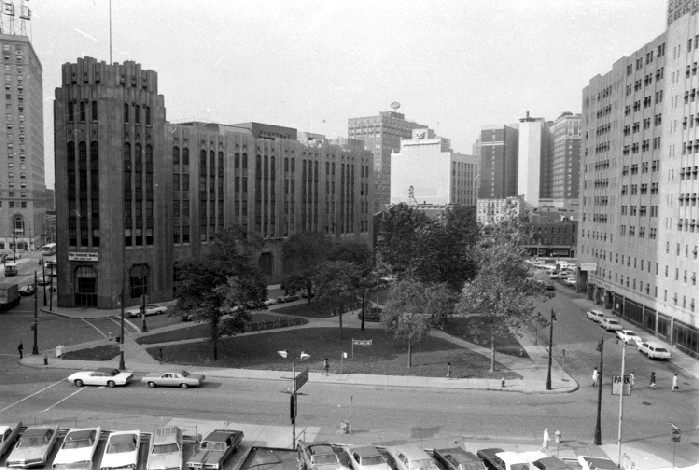
Chris Raab recalls having a conversation with his mom about the Detroit Times. He remembers seeing the now-defunct newspaper around the house when he was a kid, and later on, his mother told him the paper was just as popular as The Detroit News and Detroit Free Press. These memories prompted him to ask the question:

“There used to be a Times Square in Detroit. I know there’s still a People Mover stop, and I know there’s a street, but there used to be an actual square. And I think it was named after the old newspaper, the Detroit Times, but where was the newspaper headquartered? And also, how big of a paper was the Times?”
THE SHORT ANSWER
The Detroit Times was first published in 1900 under the name Detroit Today. After a few years, it went into receivership, and William Randolph Hearst bought it in 1921. Around that time, the paper’s name was changed to the Detroit Times.
The newspaper’s building was located at Cass Avenue and Times Square in the city’s downtown. Famed architect Albert Kahn designed the building, which was completed by 1929. Housing the earthshaking printing presses and a rather utilitarian newsroom, the building also had a lavish lobby designed in the Art Deco style, which was popular at the time. Across the street were Times Square Park and Times Square Bar, which was one of several local watering holes frequented by Detroit Times reporters.
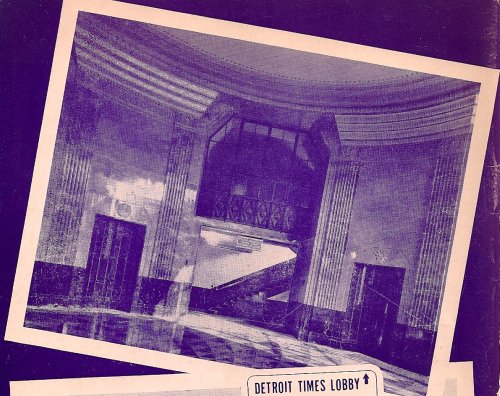
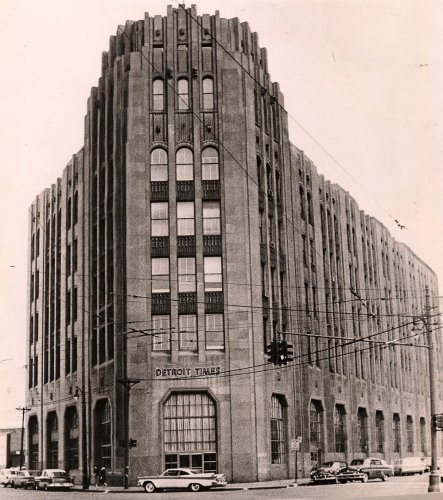
The paper was bought out by its rival The Detroit News in 1960. To cope with the surge in subscribers — the News absorbed the Times’ subscribers as part of the purchase agreement — the Times building continued to house working printing presses for a few years. But by the early 1970s, the presses were obsolete, and the building closed by mid decade. It was demolished in 1978 and now a nondescript, triangle-shaped, surface-level parking lot is there.
Times Square Park, across the street from the former site of the Times building, also became a parking lot. Now part of the site houses the Rosa Parks Transit Center, which opened in 2009.
THE SENSATIONAL TIMES
When William Randolph Hearst (of Citizen Kane fame) purchased the Times, its daily circulation grew from 26,000 to 150,000 in a single year. His style was characterized by sensational, attention-grabbing tabloid headlines, and people walking the bustling streets of Detroit couldn’t get enough. By 1950, the paper’s daily weekday circulation was more than 440,000.
For instance, on one Monday evening, Times readers were greeted by a front page which read: “Killer of Widow May Still Be On Mackinac,” and on another day “Matches Stop Bullet, Save Policeman’s Life.”
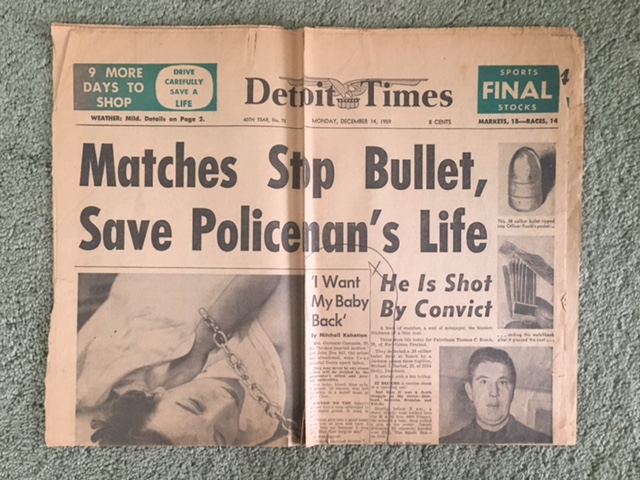
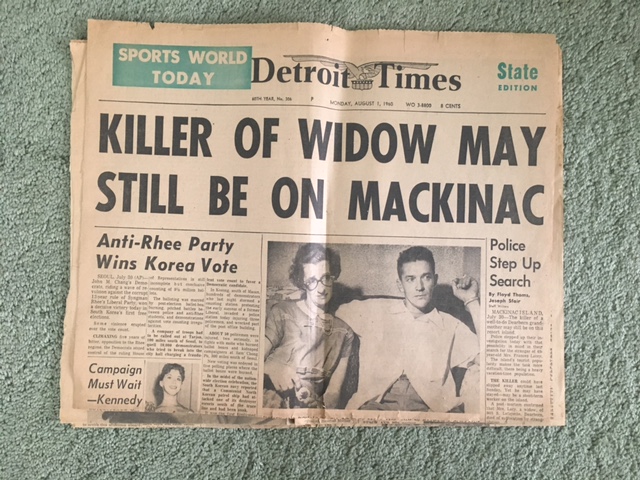
Hearst wanted the newspaper’s home building to be a palace worthy of one of the top papers in the city, so he commissioned renowned architect Albert Kahn to build one. Kahn knew just what to do. He had also built the Free Press building on Washington Boulevard and Cass Avenue and the Detroit News building on Lafayette Boulevard and Third Street. When the Times building was completed to much fanfare in 1929, everything from the newsroom to the advertising department to the mammoth printing presses were all housed under one roof.
A FORMER REPORTER’S MEMORIES
While the newsroom air often hung with plumes of cigarette smoke and the scent of liquor, former Times reporter Mitch Kehetian remembers quite a different scene in the building’s lobby.
When Kehetian first went to Times in search of a job in 1953, he was just 22 years old and attending night school at what was then Wayne University. He wore a suit for his interview and was hired as a copyboy, “the 1950s equivalent to an editorial assistant,” he says. After working his way up the ranks to senior copyboy and eventually to reporter, Kehetian became accustomed to the colorful characters he called colleagues. A few memories in particular stand out to him all of these years later.

The first is when a horse was trotting around the newsroom after a co-worker convinced a police officer to allow him to take his horse up the freight elevator in the Times building.
The second memory involves a colleague going on a drinking binge for a few days and finally returning to work with a burlesque dancer who proceeded to do a performance on the copy desk inside the newsroom.
The final memory is perhaps the one that stuck the most: the night he found out the Times was purchased by the Detroit News. It was in November 1960.
“I had gone into the paper on a Sunday night because at that time I was working the Sunday night police beat shift at the Detroit Police headquarters on Beaubien. Around 1 o’clock, a reporter from the News and I went to Chinatown for an early morning dinner and when we came back I picked up my desk phone — which was automatic to the newsroom — around 2:30, and it was dead,” Kehetian says. He remembers thinking “Gee, that’s strange,” and then asking the News reporter he was with if he could use his phone.
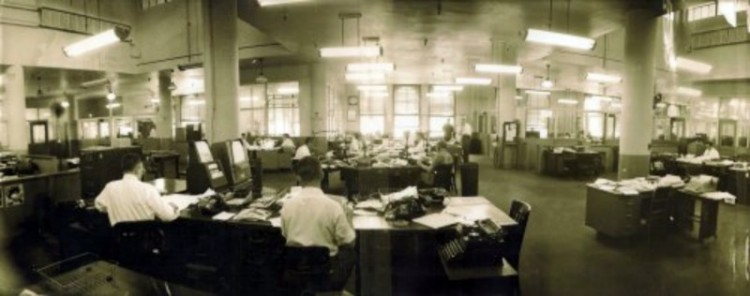
“He said ‘yeah’ and picked up the phone to the News and said, ‘Hey, Kehetian wants to use the phone. Is it okay?’ And the other guy said, ‘Yeah, but why?’ And the reporter said ‘Because he can’t get through.’ And the guy on the other end of the line said, ‘Yeah, because we bought it. It’s done. It’s closed.’ And that’s how I found out,” recalls Kehetian, now 86 and living with his wife, Rose, in Allen Park.
Kehetian remembers the Times staff all received telegrams informing them they had been terminated. He says it took years for him and others to cope with the way they were treated when the paper closed. “They shut it down in the morning when no one would know. They made you feel like you were gonna sneak in and destroy property. They treated us like crap, you know? There was a lot of resentment,” he says.
THE DESCENT
Despite their stiff competition with fellow evening paper, The Detroit News, the Times journalists managed to give their rivals a run for their money. But, as journalism changed, so did other factors that eventually led to the paper’s demise. For instance, the Times sold a lot of copies in downtown Detroit, which made sense, because the Times was a Detroit-centric paper. However, according to historian and creator of HistoricDetroit.org, Dan Austin, “By 1960 when the paper closed, Detroit had started bleeding population. So seeing this, the Free Press and the News had already started making inroads into the upstart suburbs but, the Detroit Times basically began and died there at the city limits.”
This decline in population was coupled with more home televisions, car radios and an increasing number of newspapers focusing less on downtown areas exclusively. Once the Times was bought out, its staff scattered, with some of the lucky ones landing jobs at the Free Press, the News and papers in other big cities.
Kehetian went on to work for a paper in Columbus, Ohio, and then later became the editor of the Macomb Daily in metro Detroit. But now, nearly 60 years later, Kehetian says he still has dreams about the Detroit Times.
“It was like a family, and to this very day I still have dreams of working at the Detroit Times, even after all this time, because what I do is think about the old times and the reporters that I worked with and I realize they’re all gone,” he says.

The Detroit News used the printing presses inside the Detroit Times building for a few years, but once those became obsolete, the building closed in 1975. A few years later in 1978 it was demolished by those who thought the parcel would make a better parking lot than a home for an abandoned structure. Times Square Park across the street also became a parking lot, and eventually became the site for the Rosa Parks Transit Center which opened in 2009.
ABOUT THE LISTENER
Chris Raab lives in Rochester, Michigan. He was inspired to ask his question after having childhood memories of the Detroit Times paper around his house, and talking with his mother about the paper’s popularity during his childhood.
ASK YOUR QUESTION
ABOUT DETROIT OR THE REGION
WDET’s CuriosiD is sponsored by the Michigan Science Center.

